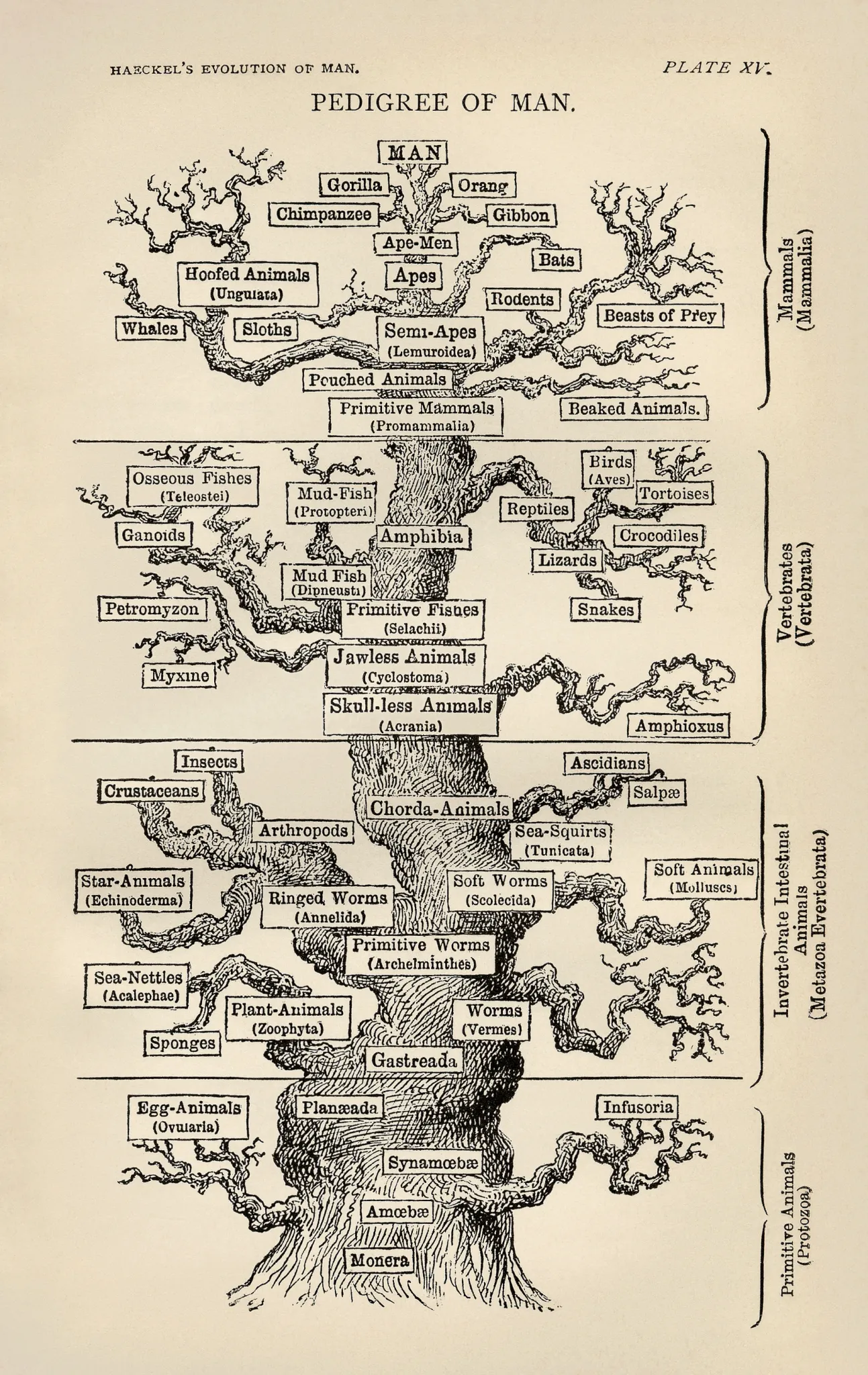The Tree of Life symbol has been present throughout human history, appearing in different cultures and belief systems. Its symbolism has been interpreted in various ways, but one thing is certain: it carries tremendous spiritual significance. In this post, we’ll explore the origins of this ancient symbol, its meanings in different cultures, its relevance in contemporary culture, and much more. So if you’re curious about the meaning of the Tree of Life, keep reading!
Origins of the Tree of Life Symbol

The Tree of Life is a timeless symbol that has been present across numerous cultures and belief systems throughout history. The meaning of the Tree of Life varies from culture to culture, but it always represents a connection between the physical and spiritual worlds. Below are some of the origins of the Tree of Life symbol.
- In ancient Egypt, the Tree of Life was called the “Persea” tree and was a sacred tree that was believed to provide eternal life.
- In Norse mythology, the Tree of Life is known as Yggdrasil and is believed to connect the nine worlds.
- In Hinduism, the Tree of Life is called the Kalpavriksha and represents the wish-fulfilling divine tree.
- In Christianity, the Tree of Life is mentioned in the Book of Genesis and is the tree that Adam and Eve ate the forbidden fruit from.
The origins of the Tree of Life symbol illustrate how it has been a part of multiple cultures and belief systems, each imbuing it with their unique interpretations and meanings. Today, the Tree of Life has become a universal symbol that transcends specific cultures or belief systems, which has enabled us to draw meaning and relevance from it in contemporary society.

Understanding the origins of the Tree of Life symbol can help deepen our appreciation of its significance and provide us with a more comprehensive understanding of how different cultures and societies view the interconnectedness of the physical and spiritual worlds. Furthermore, through the symbol of the Tree of Life, we can consider our own place in the world and how we connect with the natural world around us.
In summary, the origins of the Tree of Life symbol provide an insight into how various cultures and belief systems viewed their place in the world and the importance of acknowledging the interconnectedness of the physical and spiritual world.
Symbolism of the Tree of Life in Different Cultures
The Tree of Life is one of the most universal and ancient symbols found throughout history. Its significance is deeply rooted in various cultures worldwide, each with their own interpretation and meaning.
In ancient Egyptian culture, the Tree of Life was believed to connect the world of the living and the dead. It was also thought to provide protection and nourishment for the soul. Meanwhile, in Norse mythology, the ash tree, Yggdrasil, was seen as the center of the universe and a symbol of wisdom, strength, and stability.
In Hinduism and Buddhism, the Bodhi Tree represents the tree under which the Buddha achieved enlightenment. It is a symbol of spiritual awakening, transcendence, and the realization of the true nature of existence.
In Christianity, the Tree of Life is mentioned in the book of Genesis, where it is described as a tree planted in the Garden of Eden. It served as a source of eternal life, and when Adam and Eve disobeyed God, they were expelled from the Garden and lost access to the tree’s life-giving properties.
The tree has also been depicted in various art forms, from paintings to sculptures. In Mexican folk art, the Tree of Life symbolizes the importance of family and ancestry. It is often depicted with roots that lead to the underworld and branches that reach towards the heavens.
The Tree of Life has become a popular symbol in contemporary culture, representing personal growth, interconnectedness, and the beauty of life’s journey. It is often used in jewelry and other accessories, as well as tattoo designs.
Overall, the Tree of Life has a rich and diverse symbolic history, but its message remains constant: the interconnectedness of all living things and the importance of spiritual growth and evolution.
Spiritual Significance of the Tree of Life
The Tree of Life is not just a symbol; it’s a spiritual concept that has been around for ages. Different cultures and religions have different interpretations of the tree and its symbolism. In many belief systems, the Tree of Life is considered sacred, representing the connection between the physical and spiritual world.

The concept of the Tree of Life has spiritual significance beyond specific religious beliefs. The tree itself represents growth, rootedness, nourishment, and stability. The concept goes beyond the physical world into the metaphysical, where the Tree of Life symbolizes the interconnectedness of all living things, and their existence in the universe. Many people believe that the tree is also a symbol of spiritual growth and personal development.
Here are some ways the Tree of Life is spiritual significance across different cultures and beliefs:
-
Christianity: In the Bible, the Tree of Life is mentioned in the first book, Genesis. The tree is said to grow in the center of the Garden of Eden, and its fruit grants eternal life. Many Christians believe that the Tree of Life is a symbol of salvation and the eternal life that is granted to believers in Christ.
-
Judaism: In Jewish mysticism, the Tree of Life, or Etz Chaim, is a representation of the different spiritual worlds and their connection. Kabbalists believe that the Tree of Life represents the sefirot, or attributes of God, and the path of return to God and spiritual realization.
-
Islam: In Islamic mythology, the Tree of Life, or the Sidrat al-Muntaha, represents the final boundary of the universe.
-
Native American Spirituality: In many Native American cultures, the tree represents the connection between people and the natural world. The tree’s roots represent connection to the earth, and its leaves and branches represent the connection to the sky and the great spirit.
-
Hinduism: In Hinduism, the Tree of Life is represented as the Akshaya Vat, whose roots are in the netherworlds, the trunks or middle layer represents the earth, and the branches reach into heaven. The tree is believed to grant worldly and spiritual desires.
The spiritual significance of the Tree of Life has made it a beloved symbol in contemporary culture. People use the symbol to represent their connection to the universe, their spiritual growth, and their connection to nature. Many people get Tree of Life tattoos to represent their personal growth or to remember loved ones who have passed away.
In summary, the Tree of Life has spiritual significance across different cultures and beliefs, representing the connection between the physical and spiritual world, personal growth, and spiritual development. No matter your belief, the Tree of Life can be an inspiring symbol to meditate on and use for personal growth and development.
Tree of Life as a Metaphor in Contemporary Culture
In addition to its cultural and spiritual significance, the Tree of Life has also become a popular metaphor in contemporary culture. The Tree of Life represents growth, interconnectedness, and a balance between the physical and spiritual worlds. Its branches reaching up to the heavens while its roots reach deep into the earth symbolize a connection between heaven and earth.
The Tree of Life has been used in many different contexts, from literature to movies and music. In J.R.R. Tolkien’s “Lord of the Rings,” the White Tree of Gondor is a symbol of hope and renewal. Similarly, in the movie “Avatar,” the Tree of Souls is the heart of the Na’vi people and represents their connection to nature.
« The Shocking Reason Jesus Called James and John ‘Sons of Thunder’ – You Won’t Believe What Happened Next
Unveiling the Shocking Truth About Blasphemy: Discover the Devastating Effects of Blasphemous Acts »
The Tree of Life has also appeared in music. Joni Mitchell’s song “Woodstock” describes a “life-giving” tree that she encounters during a festival. In Stevie Wonder’s “Another Star,” he sings about a tree that gives shelter and hope.
The Tree of Life has even become a popular tattoo design, representing a connection to nature and the spiritual world. It is often inked in elaborate, symbolic designs that reflect the wearer’s personal beliefs and experiences.
In contemporary culture, the Tree of Life continues to be a powerful metaphor that resonates with people from all walks of life. Whether through literature, movies, music, or personal tattoos, the Tree of Life serves as a symbol of growth, interconnectedness, and reaching for something greater than ourselves.
As a Christian, you can also find significance in the Tree of Life as a representation of eternity and the spiritual connection between heaven and earth. Its roots in the earth can symbolize a groundedness in Jesus Christ, while its branches reaching towards heaven represent a connection with God in the spiritual realm.

Overall, the Tree of Life serves as a powerful reminder of the beauty and complexity of the natural world and the deep spiritual connections that exist within it.
Interpretations of the Tree of Life in Art History
Art is a tangible representation of human culture and history. The tree of life icon has been represented in numerous artworks throughout history, with each interpretation adding more meaning to this complex symbol. Here are some of the most intriguing art interpretations of the tree of life:
-
Celtic Art: The Celts believed that trees were a source of power and wisdom. The tree of life symbolizes the interconnectedness of the world, with its roots representing the underworld, trunks the earth, and branches the heavens. The Celts represented the tree of life with a central trunk and branches that extended outward, representing the interconnectedness of all things.
-
Islamic Art: In Islamic art, the tree of life is depicted as an important symbol of Islamic culture. The tree represents the Islamic faith’s nourishment, growth, and life-giving power. It is presented as a symbol of fertility, with the leaves of the tree representing the abundance of life.
-
Art Nouveau: The Art Nouveau was a movement popular at the end of the 19th century to the beginning of the 20th century inspired by nature. The tree of life was a recurring theme of the movement, with its leafy tendrils of foliage that symbolize the vitality and growth of the natural world.
-
Jewish Art: In Jewish culture, the tree of life is the central symbol of the Kabbalah, a Jewish mystical system of beliefs. The tree of life is a representation of the divine flow of energy that creates the universe, with its roots representing the foundation of the creation, and the branches referring to the emanations of the divine presence through the created world.
-
Mexican Folk Art: The tree of life is a popular icon in Mexican culture, it is a useful tool for representing the human life cycle, from birth to death. In Mexican Folk Art, the tree of life is often depicted as a colorful pottery sculpture featuring a central trunk and branches that twist and turn, with each branch representing a different aspect of Mexican culture.
The tree of life has been represented in various forms of art culture, and even though each artwork may vary, the symbolic message remains the same. The tree of life is a universal symbol representing the cycle of life and death associated with personal growth, endurance, and wisdom.
Tree of Life as a Symbol of Personal Growth and Healing
The Tree of Life has been regarded as a symbol of personal growth and healing for centuries in various cultures and belief systems. Its roots represent a solid foundation, while its branches extend to the heavens, connecting the earth and the sky. It has been depicted as a path that leads to greater wisdom, enlightenment, and inspiration.

In Christianity, the Tree of Life is mentioned in the bible as a symbol of eternal life. It is said to represent the goodness and love of God and the promise of eternal salvation. The tree is also believed to offer spiritual nourishment and healing, and is therefore regarded as a symbol of personal growth and development.
Many people throughout history have used the Tree of Life as a meditation tool to promote healing and self-discovery. The tree guides the individual on a journey of self-exploration, helping them locate and confront deep-seated fears and emotional trauma. As the journey progresses, the individual grows and learns, discovering new aspects of their true selves. This growth is symbolized by the Tree of Life’s branches, which extend higher and stronger as the individual progresses.
The Tree of Life is also associated with the chakras, the energy centers of the body that are said to regulate various physical, emotional, and spiritual functions. Each chakra is linked to a specific area of the body and is associated with a certain aspect of human nature. The Tree of Life is believed to help balance and align the chakras, leading to greater well-being and harmony.
In summary, the Tree of Life is a powerful symbol of personal growth and healing. It represents the connection between heaven and earth, the promise of eternal life and salvation, and the journey of self-discovery and healing. By meditating on the Tree of Life, individuals can gain a deeper understanding of themselves and the world around them and achieve greater levels of spiritual and emotional well-being.












